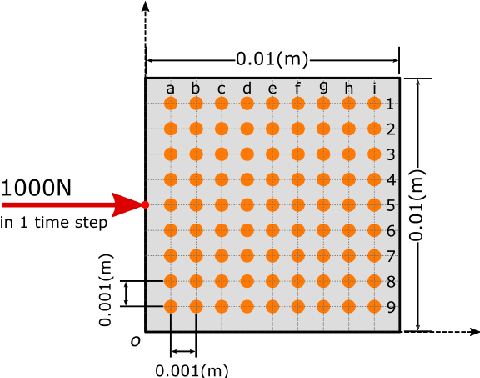Frank Wuttke
Physics-Informed Neural Networks for High-Frequency and Multi-Scale Problems using Transfer Learning
Jan 15, 2024Abstract:Physics-informed neural network (PINN) is a data-driven solver for partial and ordinary differential equations(ODEs/PDEs). It provides a unified framework to address both forward and inverse problems. However, the complexity of the objective function often leads to training failures. This issue is particularly prominent when solving high-frequency and multi-scale problems. We proposed using transfer learning to boost the robustness and convergence of training PINN, starting training from low-frequency problems and gradually approaching high-frequency problems. Through two case studies, we discovered that transfer learning can effectively train PINN to approximate solutions from low-frequency problems to high-frequency problems without increasing network parameters. Furthermore, it requires fewer data points and less training time. We elaborately described our training strategy, including optimizer selection, and suggested guidelines for using transfer learning to train neural networks for solving more complex problems.
Wave based damage detection in solid structures using artificial neural networks
Mar 30, 2021



Abstract:The identification of structural damages takes a more and more important role within the modern economy, where often the monitoring of an infrastructure is the last approach to keep it under public use. Conventional monitoring methods require specialized engineers and are mainly time consuming. This research paper considers the ability of neural networks to recognize the initial or alteration of structural properties based on the training processes. The presented work here is based on Convolutional Neural Networks (CNN) for wave field pattern recognition, or more specifically the wave field change recognition. The CNN model is used to identify the change within propagating wave fields after a crack initiation within the structure. The paper describes the implemented method and the required training procedure to get a successful crack detection accuracy, where the training data are based on the dynamic lattice model. Although the training of the model is still time consuming, the proposed new method has an enormous potential to become a new crack detection or structural health monitoring approach within the conventional monitoring methods.
 Add to Chrome
Add to Chrome Add to Firefox
Add to Firefox Add to Edge
Add to Edge